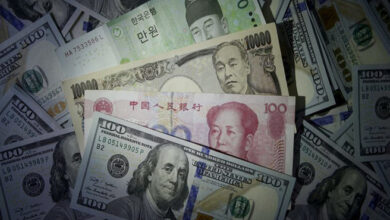China’s onshore yuan falls to its lowest level since the 2008 financial crisis.

Shanghai: On Wednesday, the onshore yuan fell to its weakest level against the dollar since the Global Financial Crisis of 2008. At the same time, the offshore yuan hit a record low. This was because people thought the Federal Reserve would raise interest rates again soon.
Currency traders said that the local currency was reacting to the strength of the dollar on global markets as the dollar hit a new peak against a group of currencies for the first time in 20 years. In recent days, demand for safe havens and a more aggressive Fed have helped the dollar. [FRX/]
The onshore dollar opened at 7.1800 per dollar and fell to a low of 7.2302 in early trading, which was the lowest since January 2008. It was worth 7.2233 at noon, which was 433 pips less than the last late session close.
The offshore yuan dropped as low as 7.2349, which is the lowest level since data on this started being collected in 2011. It was last traded around noon at 7.2315.
Several currency traders said that Wednesday was a very strong day for corporations to buy dollars, which put more pressure on the yuan.
Related: COVID saps China’s consumer and producer inflation in August.
A trader at a foreign bank said, “Those who want to turn their FX receipts into Yuan are waiting for better prices.”
A second trader at a foreign bank said that the weakening of the yuan was similar to what was happening on Wednesday with other currencies.
“All non-dollar currencies fell in early trades, and the yuan can’t get away,” the trader said.
Before the market opened, the People’s Bank of China (PBOC) set the midpoint rate at 7.1107 per dollar. This is the lowest level in over two years and is 385 pips or 0.54% lower than the previous fix of 7.0722.
Analysts at ANZ said in a note that the government has been trying to slow the rate of depreciation by setting fixings that are much stronger than expected. However, it is clear that they are not trying to defend a certain level.
So, if the dollar keeps getting stronger, the government will let the yuan get weaker, but they will take steps to make sure it doesn’t get out of hand.
Even though China’s central bank announced new steps on Monday to slow the recent fall of the yuan by making it more expensive to bet against the currency, the declines are still happening.
The PBOC also cut the amount of foreign exchange reserves that financial institutions had to hold earlier this month. This was also seen as an attempt to slow down the yuan’s fall in value.
A third trader at a Chinese bank said that the government’s efforts to stop the yuan from getting weak were not having much of an effect.
A source told Reuters late on Tuesday that Chinese monetary authorities are asking local banks to bring back a tool for fixing the value of the yuan that they stopped using two years ago. They want to steer and protect the currency, which is getting weaker quickly.
“We think the CNY fixing guidance will remain the main way to support the RMB, and if necessary, the PBOC will freeze the CNY fixing to lock the USD/CNY spot at the upper trading limit of 2%,” said Ken Cheung, chief Asian FX strategist at Mizuho Bank.
“This will be the least expensive way to cap the USD/CNY spot that will still work,” Cheung said.
He thinks that the government could slow down the rate of yuan depreciation by doing more things, like talking to people and putting up signs.
The Yuan market at 0405 GMT:
ONSHORE LOCATION:
Change the current item.
PBOC midpoint: 7.1107, 7.0722, -0.54%
7.2233, 7.18, -0.60% yuan spot
Leaving 1.58% behind
midpoint
Change on the spot: -12.02%
Change on the spot since 2005: 14.58%
revaluation
Important lists:
Change the current item.
CNH index
Dollar index: 114.539; 114.106; 0.4
Related: Even though China’s COVID worries are growing, Asian stocks keep going up.
*A difference in the exchange rates of the US dollar and the Chinese yuan.When the number is less than zero, it means that the spot yuan is trading for more than the midpoint. The official midpoint exchange rate that the People’s Bank of China (PBOC) sets each morning can go up or down by 2%.
Offshore CNH Market
Instrument Current Difference
from the coast
The offshore spot yuan rate is 7.2315 -0.11%.
Offshore 7.1203 -0.13%
non-deliverable
fronts
Offshore spots cost more than onshore ones.
**This figure shows a difference from PBOC’s official midpoint, since non-deliverable forwards are settled against the midpoint.





